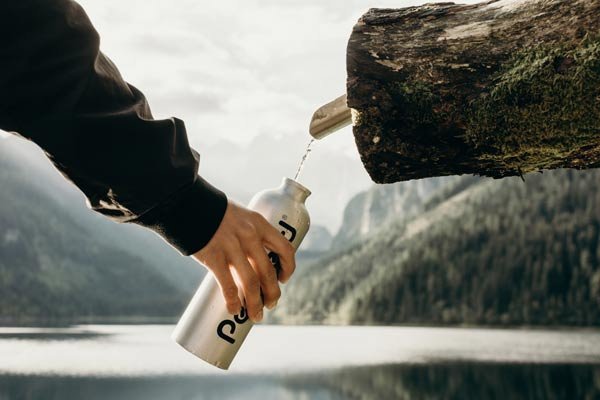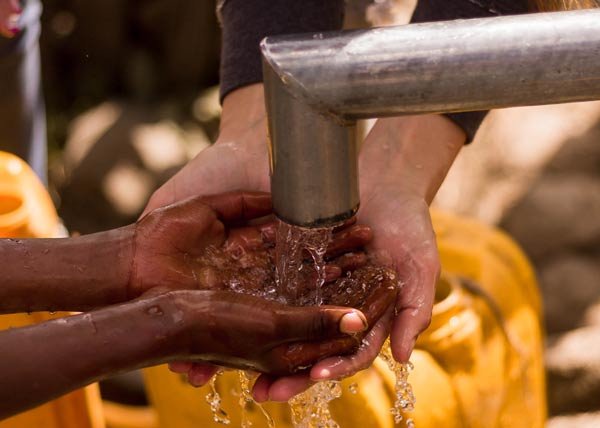The world is running out of water
The world is running out of water. If we keep using freshwater as we are now—as though it were an unlimited resource and a dumping ground for untreated waste—we will experience a global freshwater shortfall of 40% by 2030, 10 years’ time!
Water leakage is a strong contributor in many cities
Water leakage is a major global problem in many cities that is measured as non-revenue water (NRW), which is water that leaves the treatment plant and is not charged to customers. The biggest culprit is service pipes connecting customers to mains, which are responsible for as much as 95% of all leaks.
NRW can be as high as 70%
According to OECD, there are some cities with an NRW as high as 70%, with many experiencing leakages of around 20-30% (South Africa and Kenya have NRW’s of 35% each). An NRW of 25% means that the city will need to produce an additional one-third water to make up the losses.
Daily leakages in developing countries costs $39 billion annually
In developing countries, the World Bank has computed losses from leakages of at least 45 million cubic meters water EVERY DAY, enough for almost 200 million people. A further 30 million cubic meters is lost by pilferage, employees’ corruption, and poor metering. Updated research computes in 2018 losses of 346 million cubic meters per day.
The leakages are estimated to cost $14 billion annually and increasing, with updated research in 2018, at $39 billion p.a.
There are many causes including poor quality service pipes
Causes of leakage include:
- Physical losses, e.g. poor-quality pipes and other assets
- Commercial losses, e.g. meter under-registration
World Bank research shows that physical losses are by far the majority of causes, 80% in developed countries.
Service pipes are made from various materials
Service pipes from mains to customers, main source of physical losses, are usually made from plastic, galvanized steel, copper, or even more historically, lead. These are at significant risk of damage from corrosion, earth movement, seismic events and extremes of temperature, particularly at joins.
Stainless steel is an outstanding alternative that is environmentally- and human-friendly
Stainless steel is an alternative material for service pipes, hygienic, corrosion-resistant in most soils and underground conditions (higher grades achieve even better), can withstand pressure and is highly ductile (will bend rather than break) and is a long-lasting (100 years and more) solution. In addition, partly corrugated piping provides flexibility and seismic-resistance and eliminates need for most joins, making the installation process very easy.
Stainless steel delivers high-quality water and significant cost-savings
Stainless steel has durability, strength, resilience and can consistently deliver high-quality potable water that is free of bacteria and chemical contaminants, even under stressed conditions.
A service system that works year after year with little repair and low maintenance required (stainless steel is self-healing and self-repairing!) provides significant value for 100 years. And then at the end of its life, stainless steel is also 100% recyclable!
Three major utilities proceed to show stainless steel’s unique value
Projects undertaken in Tokyo, Seoul and Taipei that replaced existing service pipes with stainless steel over the past years and decades.
In each case, leakage rates reduced as follows:
- Tokyo – from 15.4% (1980) to 2% (2013)
- Seoul – from 27.3% (1987) to 2.5% (2014)
- Taipei – from 27% (2005) to 16% (2014) and target for 2020 onwards at 10%
Leakage repair cases also reduced considerably, with significant savings and demonstrating that it is the cost-effective solution.
South Africa’s latest stainless steel project is a model in cost-effectiveness
Drakenstein Municipality in South Africa’s Western Cape Region is a frontrunner in use of stainless steel service piping for delivering water to customers. A currently 13% leakage rate, compared with other municipalities achieving a much worse 39% water loss.
The Drakenstein project also computed that even if it had retained using plastic pipes that lasted for 50 years (rather than 20 usually expected), these would be 1.7x more expensive than 316 grade stainless steel given repairs and maintenance and related costs.
Nijen Stainless Fabrications
Nijen Stainless Fabrication works with a number of industries and receives enquiries in relation to the following:
- Laser cutting
- Laser cutting Northern Ireland
- Stainless steel laser cutting
- Stainless steel laser cutting Northern Ireland
- Metal laser cutting
- Metal laser cutting Northern Ireland
- Stainless steel fabrication
- Stainless steel fabrication Northern Ireland
- Metal fabrication
- Metal fabrication Northern Ireland
- Stainless steel machining
- Stainless steel machining Northern Ireland
- Metal machining
- Metal machining Northern Ireland
- CNC machining
- CNC machining Northern Ireland
- Tube bending
- Tube bending Northern Ireland
- Welding
- Welding Northern Ireland


